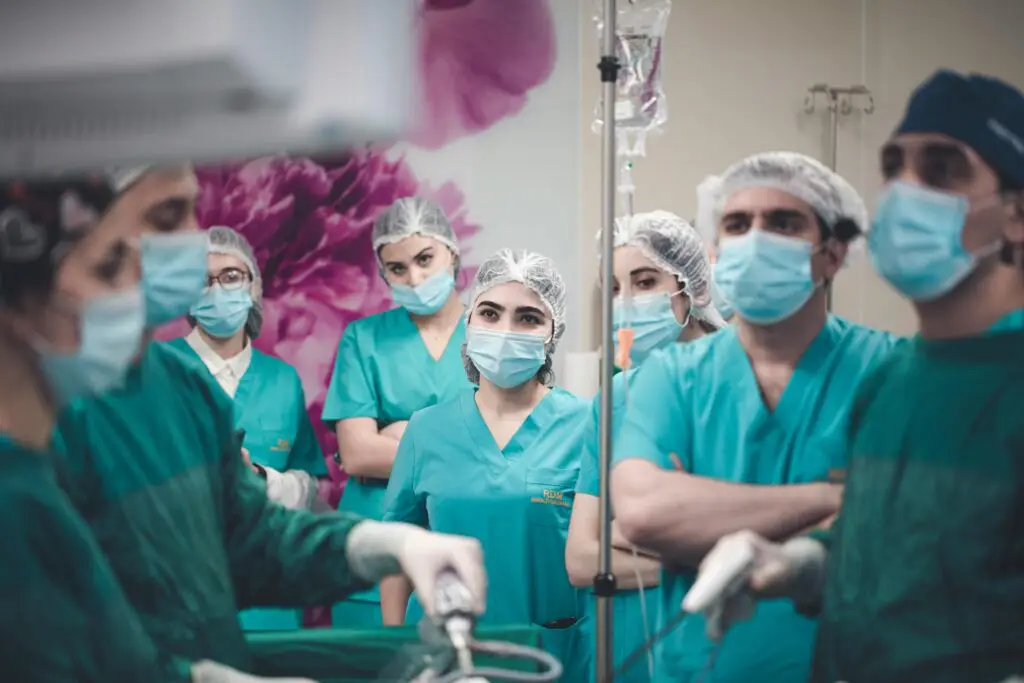
Introduction
Laparoscopic sleeve gastrectomy (SG) is a widely performed bariatric surgery designed to aid weight loss by reducing the size of the stomach. Originally introduced as the first step in a two-stage procedure for patients with super obesity (BMI >60 kg/m²), it has since gained popularity as a standalone operation. This procedure is less complex than gastric bypass but comes with its own set of considerations, particularly regarding patient selection, surgical technique, and potential complications.
Also read:
Background and Patient Selection
SG is now primarily used as a single-stage procedure, though it can still serve as the first step in a two-stage approach for high weight patients. However, not all patients are ideal candidates for SG. Those with severe, long-standing gastroesophageal reflux disease (GERD) may experience worsened symptoms due to the anatomical changes caused by the surgery. Additionally, patients with Barrett’s esophagus are generally not recommended for SG, as the procedure may increase the risk of esophageal dysplasia and complicate future reconstructive surgeries.
Surgical Technique
Patient Positioning and Team Setup:
- The patient is placed in a supine position with foot support to facilitate reverse Trendelenburg positioning.
- The surgeon stands on the patient’s right side, the camera operator nearby, and the assistant on the left side.
Port Placement:
- A 15-mm port is inserted for stomach removal, typically near the umbilicus or in the right upper quadrant.
- A 12-mm port is placed in the alternate location.
- Two 5-mm ports are positioned in the left upper quadrant for the assistant.
- A liver retractor is placed in the epigastric region.
Devascularization and Mobilization:
- The greater curvature of the stomach is devascularized, starting 3–5 cm proximal to the pylorus and extending to the left crus of the diaphragm.
- The fundus is fully mobilized, and posterior fibrous attachments to the antrum and body of the stomach are divided.
- The stomach remains attached only by the lesser curvature blood supply, pylorus, and esophagus.
Stapling the Stomach:
- A stapler is used to divide the stomach, beginning at the devascularization point and angling toward a spot 2 cm lateral to the incisura.
- The antrum, being the thickest part of the stomach, requires careful selection of stapler size to ensure proper closure.
- Two staple firings are performed to divide the stomach past the incisura.
Bougie or Endoscope Guidance:
- After the first staple firing, a 32–40 French bougie or endoscope is inserted along the lesser curvature to guide further division.
- The bougie or endoscope helps maintain the desired gastric sleeve diameter and can be used to check for leaks or obstructions.
Final Stapling:
- Stapling continues toward the angle of His, ensuring the stomach lumen is not narrowed at the incisura.
- Proper alignment is confirmed by visualizing both the anterior and posterior surfaces of the stomach.
Staple Line Inspection and Reinforcement:
- The staple line is inspected for hemostasis and integrity.
- Some surgeons reinforce the staple line with buttress material or serosa-to-serosa sutures.
Leak Test:
- A methylene blue leak test or endoscopic insufflation is performed to check for air leaks while the staple line is submerged in saline.
Specimen Removal:
- The resected stomach is removed through the 15-mm port site, with slight enlargement of the site if necessary.
Completion:
- All instruments are removed, and ports are closed appropriately.
- Hemostasis and proper gastric sleeve formation are confirmed before concluding the procedure.
Procedure-Specific Complications
SG creates a high-pressure gastric tube, which increases the risk of staple line leaks and GERD. Key complications include:
- Staple Line Leaks:
- Proximal leaks near the angle of His are the most common and may present weeks or months postoperatively.
- Distal leaks, though less common, are typically due to mechanical failure and are more amenable to surgical repair.
- Stenosis:
- Narrowing at the incisura can elevate intraluminal pressure, increasing the risk of leaks.
- Endoscopic dilation is often effective in treating stenosis.
- Bleeding:
- The overall bleeding rate from the staple line is approximately 2%.
- The use of buttress materials or oversewing remains controversial, with mixed evidence on their effectiveness.
- GERD Exacerbation:
- The anatomical changes from SG can worsen GERD symptoms in some patients.
Postoperative Management and Revisional Surgery
Patients with persistent leaks or stenosis may require endoscopic intervention or conversion to Roux-en-Y gastric bypass (RYGB) to alleviate pressure and provide a low-pressure anastomosis. Long-term outcomes and the need for revisional surgery due to weight regain are areas of ongoing study.
Mechanism of Action of Laparoscopic Sleeve Gastrectomy
Initially considered a restrictive procedure, SG’s mechanism of action is now believed to involve accelerated gastric emptying and changes in gut hormones and bile salt metabolism. These factors contribute to the satiety and metabolic effects observed postoperatively.
Conclusion
Laparoscopic sleeve gastrectomy is an effective bariatric procedure with distinct advantages and challenges. Careful patient selection, meticulous surgical technique, and awareness of potential complications are essential for optimizing outcomes. While it is less technically demanding than gastric bypass, ongoing research is needed to further refine the procedure and improve long-term results.
Also read:
American Society for Metabolic and Bariatric Surgery
National Institute of Diabetes and Digestive and Kidney Diseases
